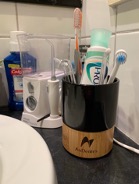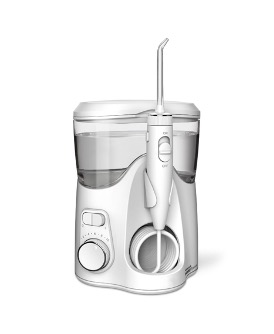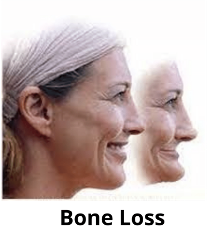

By Leanne.
Share article:
There is a lot of information out there regarding dental implants, do a web search on myths, and you will see headlines of 4 or 6 or even 10… I’m going to debunk/fact-check over 30 myths in this 3 part myth-busting session.
Myth: You can’t afford dental implants.
Full arch dental implants are expensive, no doubt about it. There are several ways, however, to pay for it.
- Early release of Superannuation Funds from your or your spouse’s retirement or 401K fund. You can do this on medical/compassionate grounds. Specific criteria apply.
- Home equity loan.
- Redraw facility on your mortgage.
- Savings.
- Side Hustle – 2nd or 3rd income stream.
- Sell unwanted items – cars, caravans, boats. (Get permission first)
- Inheritance.
- Borrowing from family.
- Payment plans – Check with your AuDentes provider for details.
- Loans – Beware of honeymoon periods and ongoing high-interest rates for medical loans.
- Credit cards with interest-free periods and 0% balance transfer options.
- Go Fund Me – fundraising.



Myth: It’s easier to get dentures.
In the beginning, yes, but they require regular re-lines; you can drop and break them, and they can go missing or fall out at the worst times.
If you’ve experienced tooth loss, wearing a bulky denture is challenging to adjust to. It can rub your gums and cause discomfort when speaking, along with mouth ulcers and sores, and annoyingly move around in your mouth when you’re trying to eat. Implants and implant bridges feel much more secure and natural than dentures. Plus, you won’t have to worry about pain or shrinking in your jawbone, which is common after getting dentures. Dental implants help prolong the overall structure of your mouth, face, and jaw by preventing bone loss.

Myth: Dental implant bridges look fake.
The truth about dental implants is they can and do look remarkably like real teeth. Created by expert ceramists and technicians from Zirconia/Acrylic/Nano-Ceramics, they fit perfectly into the smile. With good oral health, implant bridges can last many years, even decades.
The implant bridges are designed to closely mirror natural teeth in strength, structure, and appearance. You can also choose from different materials and shades to suit your natural appearance. Dental implants aren’t like removable, bulky dentures. They look more like natural teeth than any other modern prosthesis. Obviously, if you prefer a bleached shade or go ‘too white’, your teeth are not going to look natural and will look fake or, at the least, like you have had a set of veneers fitted. Dental implant bridges can look very natural when you’re eating, smiling, laughing or talking.

Myth: It’s hard to eat and talk with implants.
Full arch implants are the only tooth replacement that’s really modelled after natural teeth when you bite, chew, speak, or smile. You’re replacing missing teeth with something that looks and feels as great as natural teeth. Since implant bridges are shaped like regular teeth, they don’t inhibit eating or speaking, giving you the confidence you can depend on to live your life to the fullest. Of course, there is an adjustment/settling-in period, especially if you’ve been missing teeth for a long time and your tongue has to find its new groove.



Myth: Everyone is a candidate.

Dental implants are an amazing advance in medical technology. One of the most common myths about dental implants is that anyone can get them. Wrong!
If you’re too young, you can’t have implants as the jaws have not finished developing. Dental implants are implanted into the jawbone, and if the jaw hasn’t stopped growing, it can cause the implants to move, causing tooth misalignment.
You may be ineligible for dental implants if you’re ageing and in poor health. The implant procedure requires the fusion of the metal implant and jawbone through osseointegration. The implant cannot be appropriately placed if the bone has insufficient density. A person with advanced osteoporosis may lack the capacity for enough bone growth for successful osseointegration.
There are also a few medical conditions and limiting factors that may reduce the success of a dental implant and may lead a dentist to recommend an alternative treatment.
These conditions include:
- Alcoholism or drug addiction
- Immunosuppression
- Cancer
- Severe gum disease
- Severe bone loss requiring grafts or Zygoma implants
- Bleeding disorders
- Osteoporosis
- Poor oral health – non-compliance
- Uncontrolled Diabetes
People taking medications, including Bisphosphonates such as Fosamax, may not be ideal candidates for dental implants as these medications can prevent proper osseointegration.
Myth: The recovery time after dental implant surgery is too long.
The healing time associated with dental implants can last from two to six months, but this will vary from patient to patient. The extended healing time is needed for the dental implant root to bond to the bone, which will provide for solid adhesion. Most patients feel that getting their smile back is well worth the wait.
There’s discomfort and swelling throughout the healing process, and some people experience pain enough that it requires them to take painkillers. You can still go about your day-to-day life normally, provided you don’t do anything teeth-gnashingly hard and strenuous. It doesn’t take too long to recover from dental implant surgery regardless of the 3-6 month bonding procedure (which is itself painless).



Myth: Dental implants are harder to care for than normal teeth.
Once your dental implant restoration is complete, maintaining them is no different than caring for your natural teeth. With routine twice daily brushing, flossing, and mouthwash use and twice yearly hygiene appointments, your implant bridges can easily last for many years and your implants a lifetime.



Myth: Dental implants are unsafe, and they are too risky.

No, you won’t have to risk your life or dental health in order to undergo dental implants. If you’re a candidate for the procedure, your dental practitioner will explain the risks versus benefits. Today hundreds and thousands of people all around the world are undergoing successful placement of full arch dental implants.
Myth: Dental implants are purely cosmetic.
While it’s true that dental implants can improve the smile’s aesthetics if they’re replacing badly decayed, damaged, or missing teeth, there’s far more to them than meets the eye.
Firstly, it helps to understand the structure of a natural tooth. All teeth have roots that are buried beneath the gums. These keep the teeth firmly anchored in place and transfer the chewing pressure. The act of chewing keeps the jawbone dense and healthy.
Along with the cosmetic concerns of missing teeth affecting the smile’s appearance, the main unwanted side effect is bone loss.
Tooth loss reduces the stimulation level the jawbone receives, causing the bone to shrink and reabsorb back into the body. As this happens, the facial structures sag, giving the face a sunken or hollow ageing look.
Dental implants are the only tooth replacement method that replicates the entire tooth structure, including the roots. As a result, a dental implant halts bone loss, preserves the facial structure, improves oral health, and restores your smile.


Myth: All Teeth on 4 is better than All Teeth on 6 or more.
With missing teeth comes the natural deterioration of the surrounding bone. Just like the name, All Teeth on 4 and All Teeth on 6 both involve placing either 4 or 6 implants, respectively, to serve as an anchor for dental prosthesis.
Both options have their pros and cons, but it is best to consult your dentist to see which is best for you.
The choice between 4 implants and 6 implants is determined by your dentist. While having 6 makes for better stability, you should allow your dentist to decide the best for you as many factors are involved.
- Bone grafting. With the All Teeth on 6 procedure, there is a higher chance that you will require bone grafting as the bone in the back of the mouth is generally more limited.
- Stability. All Teeth on 6 is more stable. 6 implants give extra stability and strength. Though this is dependent on the patient’s mouth, gum, and jawbone condition. The additional two implants enhance the jaw.
- Cost. All Teeth on 6 can cost more. 6 implants is more expensive than 4, as there are two additional implants and possible bone grafting.
- Maintenance. All Teeth on 6 may be harder to clean. The more implants there are, the more posts there are to clean between, which shouldn’t be an issue with regular routine cleaning.
- Implant design. The All Teeth on 4 procedure uses angled dental implants (to avoid the need for bone grafting). The All Teeth on 6 procedure uses straight implants and may require some grafting.

All Teeth on 4

All Teeth on 6

Disclaimer: The information provided on this platform, including text, graphics, and images, is intended for general informational purposes only. It is not a substitute for professional dental advice, diagnosis, or treatment. For specific dental concerns, it is crucial to consult with a qualified dental practitioner. They will be able to assess your individual circumstances, provide accurate diagnoses, and offer appropriate treatment options tailored to your specific needs
Print article:
Share article:
Subscribe To Leanne's Blog
Ready for your new smile?


